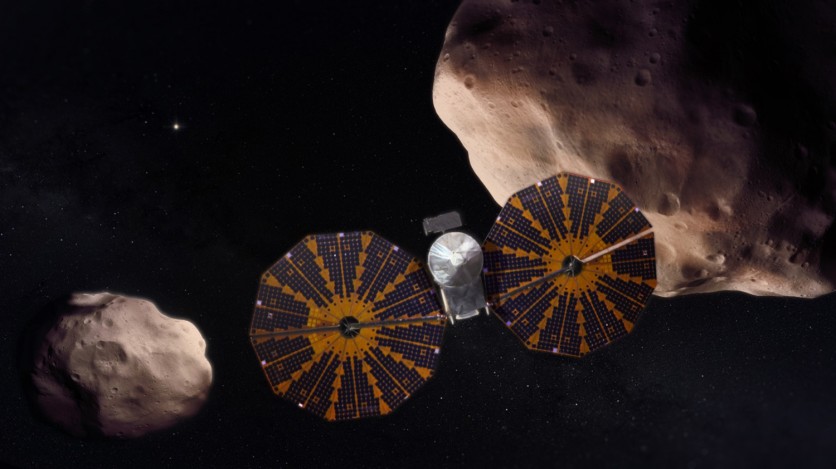NASA's Lucy spacecraft is on track for its inaugural close encounter with an asteroid. On November 1, it will pass by the asteroid Dinkinesh and test its instruments in anticipation of future visits to multiple Trojan asteroids that share Jupiter's orbit around the sun.
Dinkinesh, measuring less than half a mile (1 kilometer) in width, orbits within the main belt of asteroids situated between Mars and Jupiter. Since September 3, Lucy has been visually monitoring Dinkinesh. This marks the first of 10 asteroids that Lucy will investigate during its 12-year expedition.
Hal Levison, Lucy's principal investigator from the Southwest Research Institute, based in San Antonio, commented, "This is the first time Lucy will be getting a close look at an object that, up to this point, has only been an unresolved smudge in the best telescopes. Dinkinesh is about to be revealed to humanity for the first time."

NASA Lucy Mission to Survey Jupiter Trojan Asteroids
The primary objective of the Lucy mission, launched on October 16, 2021, is to survey the Jupiter Trojan asteroids, an unexplored group of small celestial bodies that orbit the Sun in two clusters ahead of and trailing behind Jupiter in its orbit.
Before reaching the Trojans, Lucy will conduct a flyby of another main belt asteroid in 2025, Donaldjohanson, to conduct additional in-flight tests of the spacecraft's systems and procedures.
During the Dinkinesh flyby, the team will evaluate its terminal-tracking system, allowing the spacecraft to independently determine the asteroid's position, ensuring it stays within the view of the instruments during the encounter.
Given that this encounter primarily aims to test Lucy's systems, the scientific observations will be more straightforward than those targeted at the main mission objectives, according to NASA.
The spacecraft and its instrument platform will align two hours before reaching the closest point to Dinkinesh. Afterward, it will initiate data collection using its high-resolution camera (L'LORRI) and thermal-infrared camera (L'TES).
The spacecraft will activate the asteroid tracking through the terminal-tracking system an hour before the closest approach. Lucy's closest approach is projected to occur at 12:54 p.m. EDT when it will be approximately 270 miles (430 kilometers) from the asteroid.
Capturing Dinkinesh
Lucy will continuously capture images and track Dinkinesh for nearly an additional hour. Following this, the spacecraft will adjust its orientation to reestablish communication with Earth but will intermittently record images of Dinkinesh with L'LORRI over the subsequent four days.
Once the spacecraft's condition is verified, engineers will command Lucy to transmit science data from the encounter to Earth. This data transmission process will extend over several days.
Although the primary objective of the Dinkinesh encounter is an engineering assessment, mission scientists aim to leverage the acquired data for a deeper understanding of the relationship between larger main belt asteroids explored in previous NASA missions and the smaller near-Earth asteroids.
Following the Dinkinesh encounter, the Lucy spacecraft will continue its orbit around the sun, circling back to Earth's proximity for its second gravity assist in December 2024.
This gravitational boost from Earth will propel it back to the main asteroid belt for its 2025 Donaldjohanson flyby, marking the next step in its journey towards the Jupiter Trojan asteroids in 2027.
Related Article : NASA's Lucy Spacecraft Gets First Look of Tiny Asteroid Dinkinesh

ⓒ 2025 TECHTIMES.com All rights reserved. Do not reproduce without permission.




